300-hp, manual-only GR Corolla is Akio’s love letter to U.S. enthusiasts
Remember when Ford decided the Focus RS wasn’t worth it anymore? And Subaru decided an STI might as well wait for the impending electric revolution?
Toyota just showed them both up. Welcome to the long-awaited GR Corolla, a 300-hp, manual-only love letter from Toyota to U.S. hot-hatch enthusiasts. This all-wheel-drive five-door arrives this fall, and if the sum lives up to the parts, count us besotted.
In no world is Toyota obligated to make such a car. Financially, it’s a distraction: The Japanese automaker makes the best-selling SUV in the United States (the RAV4) and the best-selling sedan (the Camry). Performance hatchbacks are low profit-margin cars that require expensive development and appeal to a niche, notoriously picky audience. Unlike the GR Yaris that shares the same powertrain, a hopped-up Corolla doesn’t unlock any new race series for the company’s motorsports division, either. But Akio Toyoda, Toyota president and erstwhile undercover factory race driver, is a gearhead with a passion for building excellent, fun cars.

He also craves purebred Toyota performance. We’d wager that neither the Supra, which is built by Magna Steyr and a BMW in all but name, nor the GR 86—a Subaru creation, in earnest—sufficiently spoke to what Toyota could accomplish on its own. So Toyoda took the company’s WRC rally car and tasked his engineers with building a street-legal version of it. They did him proud, proving dogged enough to wrestle funding to develop Toyota’s first from-scratch all-wheel-drive powertrain in 20 years and bring to market the GR Yaris: a street-legal, 257-hp version of the WRC car’s three-cylinder turbocharged powertrain. WRC driver Tommi Mäkinen, who won the championship for Toyota in 2019, was intensively involved in development.
The U.S., however, has never tasted the wasabi-laced goodness that was the GR Yaris. The fourth-generation car upon which the GR model was based isn’t sold in the U.S., and thus isn’t federalized for crash safety. When the purest of Gazoo Racing’s street-legal models debuted at the Tokyo Auto Saloon in January of 2020, the U.S. could only look on with envy. But Toyoda was paying attention; just three months later he announced that Gazoo Racing would build a hot hatch for the United States.
Marketplace
Buy and sell classics with confidence
Two years and a pandemic later, Toyoda’s made good on his promise.
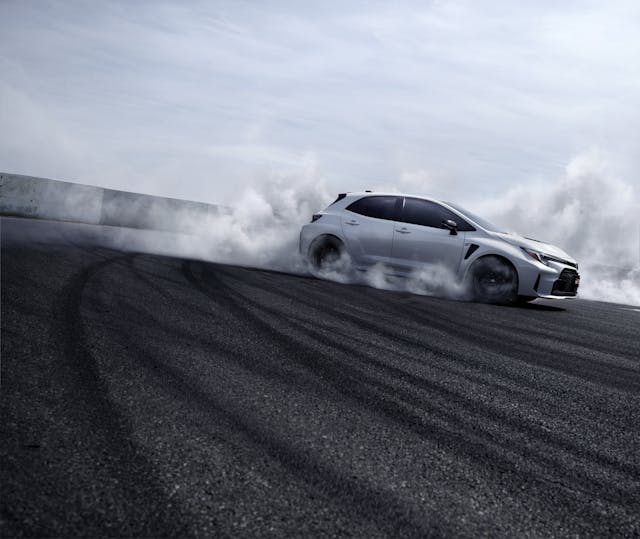
Since the all-wheel-drive, three-cylinder turbo drivetrain in the GR Yaris incorporated the back-half of the Corolla’s GA-C platform, it was only logical to graft it into the rest of the larger hatch’s frame. To prepare said architecture for its hot rodding treatment, Gazoo Racing added 349 more welds and 2748 more millimeters of structural adhesive. The resulting car, with sheetmetal on, is 1.5 inches longer and 1.4 inches wider. Wheelbase remains the same, at 103.9 inches.

That box-flared styling is no empty boast. Gazoo Racing teased 47 more hp and 8 additional lb-ft of torque from the GR Yaris’ 12-valve GT16E-GTS mill by optimizing the three-cylinder’s exhaust system. New to the GR-ified Corolla is a three-piece muffler that reduces back pressure and exits through three stainless steel tips. The whole ensemble is integrated into a wicked-looking rear diffuser.
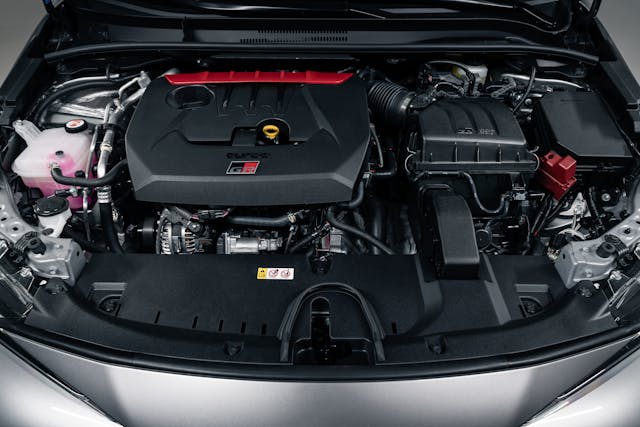
What the GR Corolla shares with its Yaris sibling, however, is just as mouth-watering: A pair of mechanically locking Torsen differentials. The trick diffs are optional on the base car, which comes standard with open diffs, but either way you get three drive modes that control the bias of power front/back: 60/40 for efficiency, 30/70 for hooning, and 50/50 for the messy stuff. The weight penalty for all this adjustable AWD goodness? Just 189 pounds over the regular hatch.
A six-speed manual is your only gearbox option. Braking is similarly appropriate to the hot-rodded driveline, with rear rotors that, at 11.7 inches, are larger than the fronts on the stock Corolla. The front rotors, clamped by four-piston calipers, are vented and slotted, measuring 14 x 1.1 inches. The stopping hardware peeks from behind 15-spoke, 18-inch alloy wheels wrapped in—glory be—Michelin Pilot Sport 4 rubber that, at 235/40, is 10mm wider than that on the regular XSE or Nightshade hatch’s.

Creature comforts aren’t forgotten. In addition to the Performance Pack, which adds the front and rear locking diffs, you can spec your Core model with heated seats and steering wheel via the Cold Weather Pack. The Technology Pack rounds out the options list with the premium stereo, courtesy of JBL, and wireless charging.
The fun doesn’t end there. For the true die-hards, Gazoo Racing will offer a limited run of first-year Circuit Edition cars boasting both aesthetic and functional upgrades. Apart from the Circuit-exclusive Heavy Metal paint (shown), the easiest way to spot one of these exclusive beasts is to peek at the hood, which is more aggressively contoured and fitted with two additional vents.
Bragging rights lie elsewhere, though: Circuit Editions automatically get the Torsen diffs plus a forged carbon-fiber roof, an even more prominent rear spoiler, suede-trimmed seats, and a shift knob bearing the signature of Akio Toyoda’s racing alter ego, Morizo. CE Corollas also get the usual suite of comfort-oriented upgrades, including a smattering of GR badges and red interior accents. Premium audio and wireless charging go without saying.

If you had told us, back in 2018, when the Focus RS was ripping around the streets of North America, that one day Toyota would build a WRC-engined, all-wheel-drive screamer with only 50 fewer horsepower and a pair of locking diffs, we’d not have dared to hope.
Toyoda and Gazoo Racing haven’t just made an also-ran hot hatch for the United States; they’ve dropped a WRC-winning screamer of a driveline into an economy car. Nobody does this anymore. Subaru’s STI is on hiatus until an uncertain electric future arrives for it. The Mitsubishi’s Evo is history, and Group B is even longer dead. The Golf R, of course, remains—and it better be shaking in its lederhosen. Toyota—Toyota!—is out for blood.
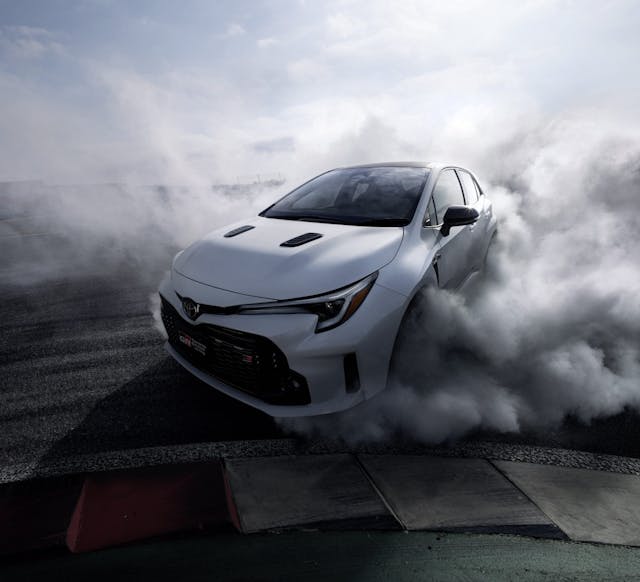
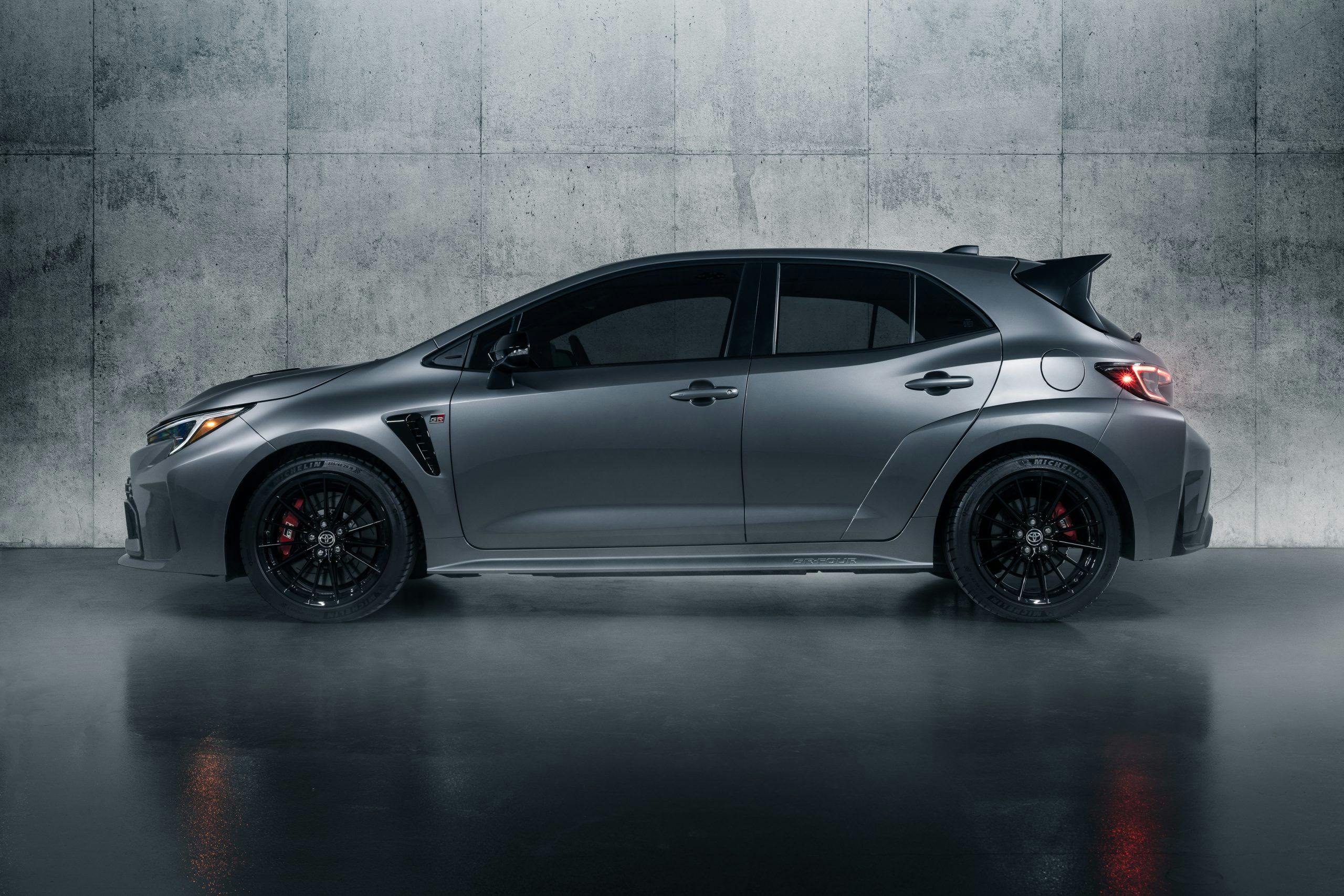
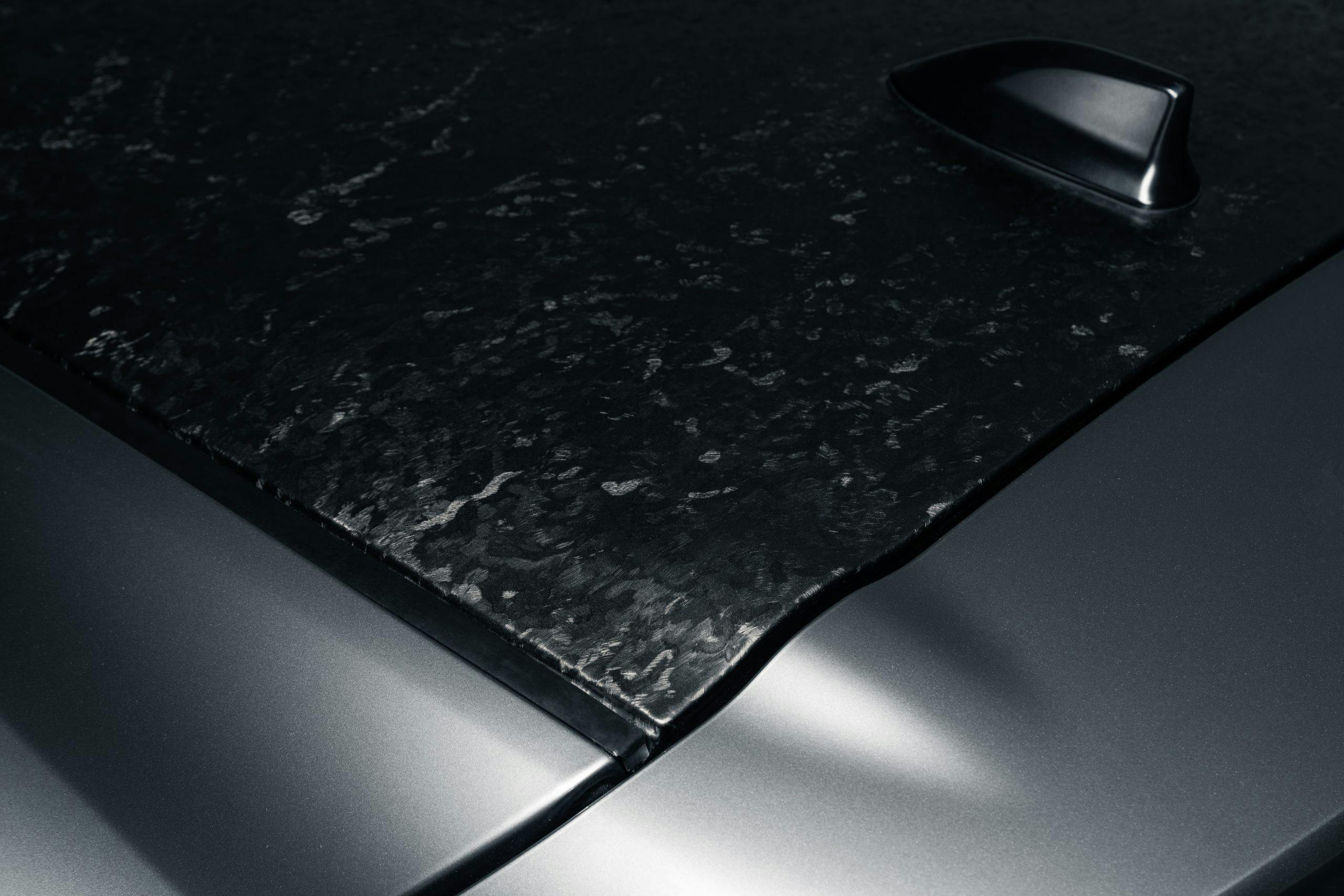


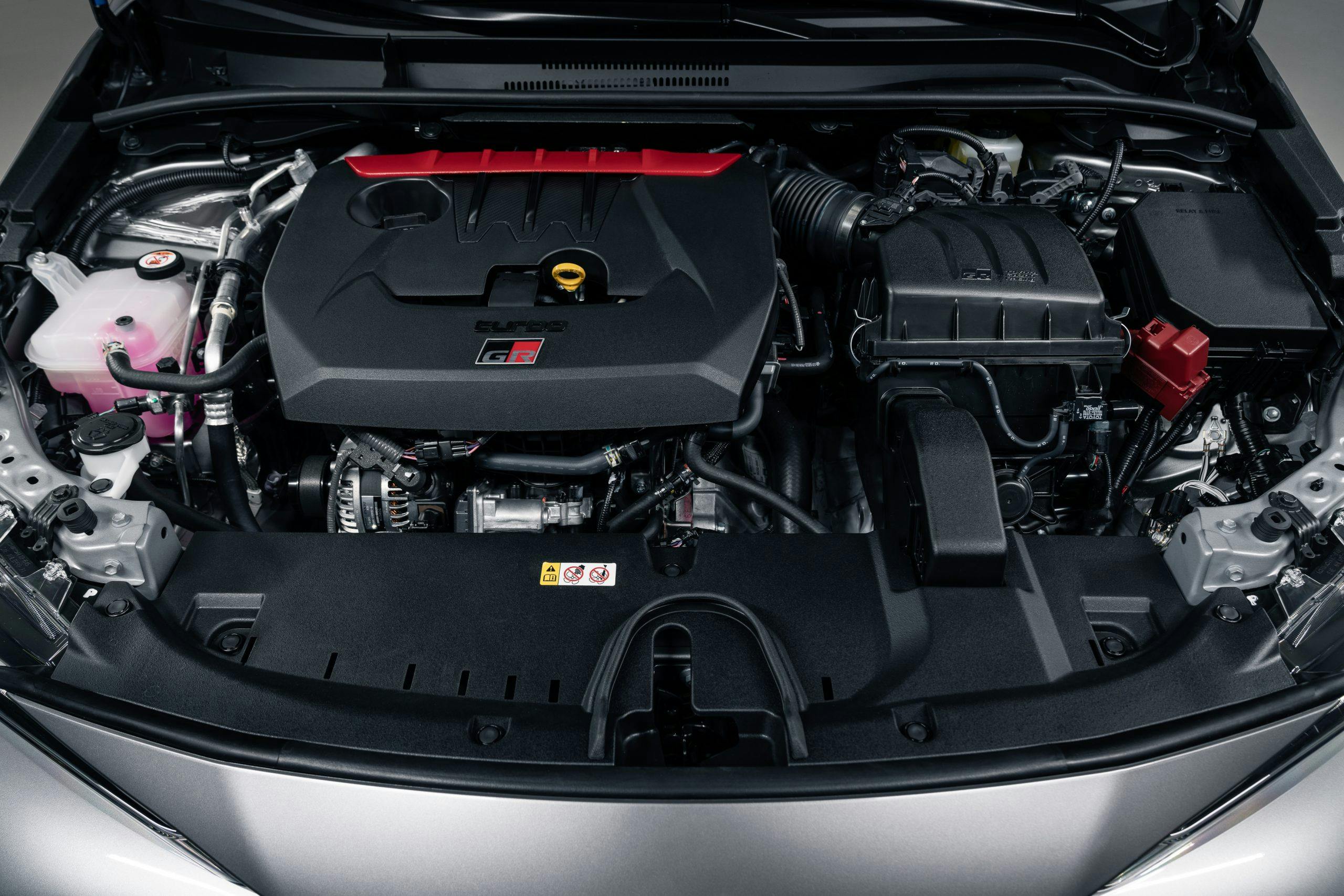
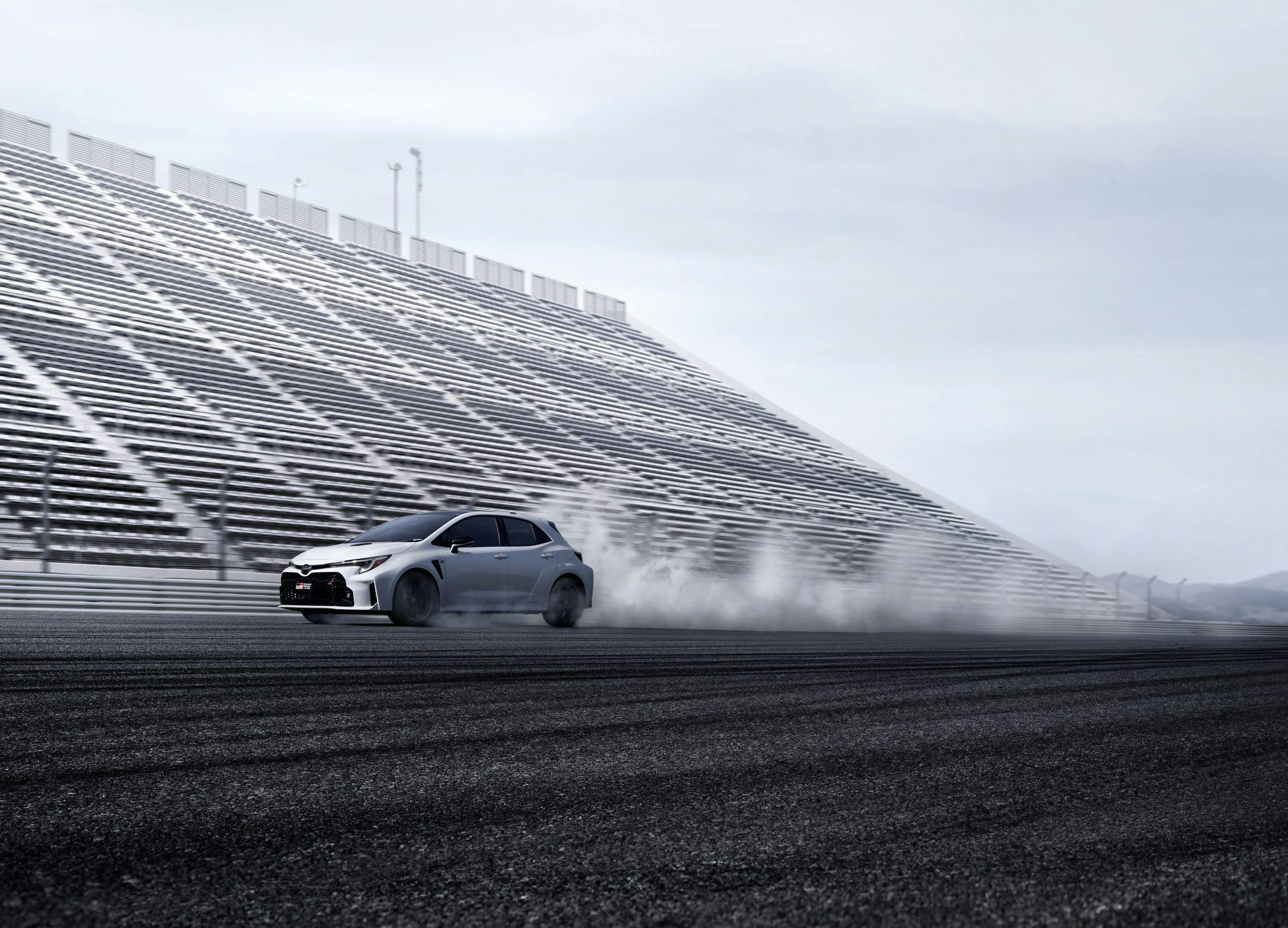
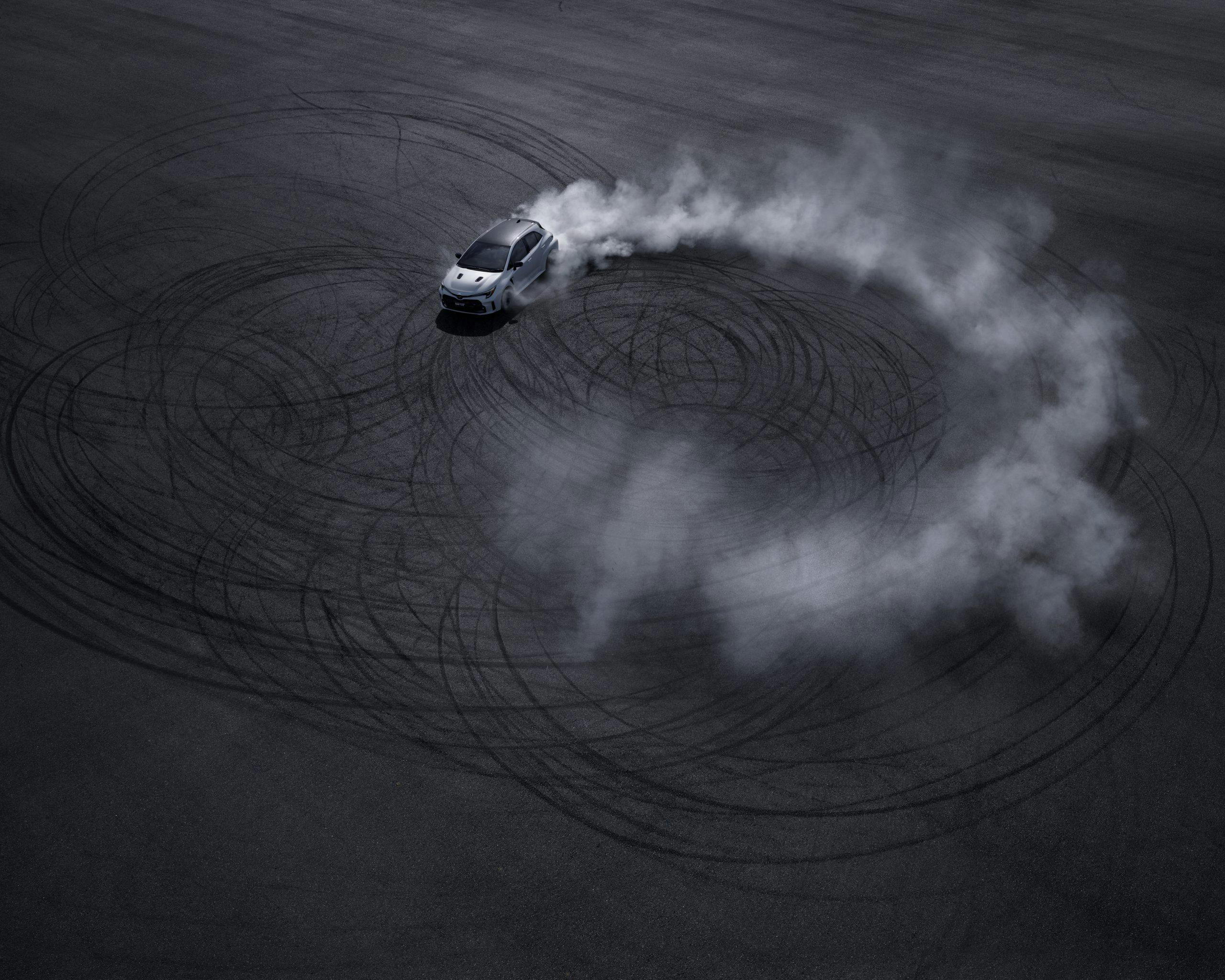
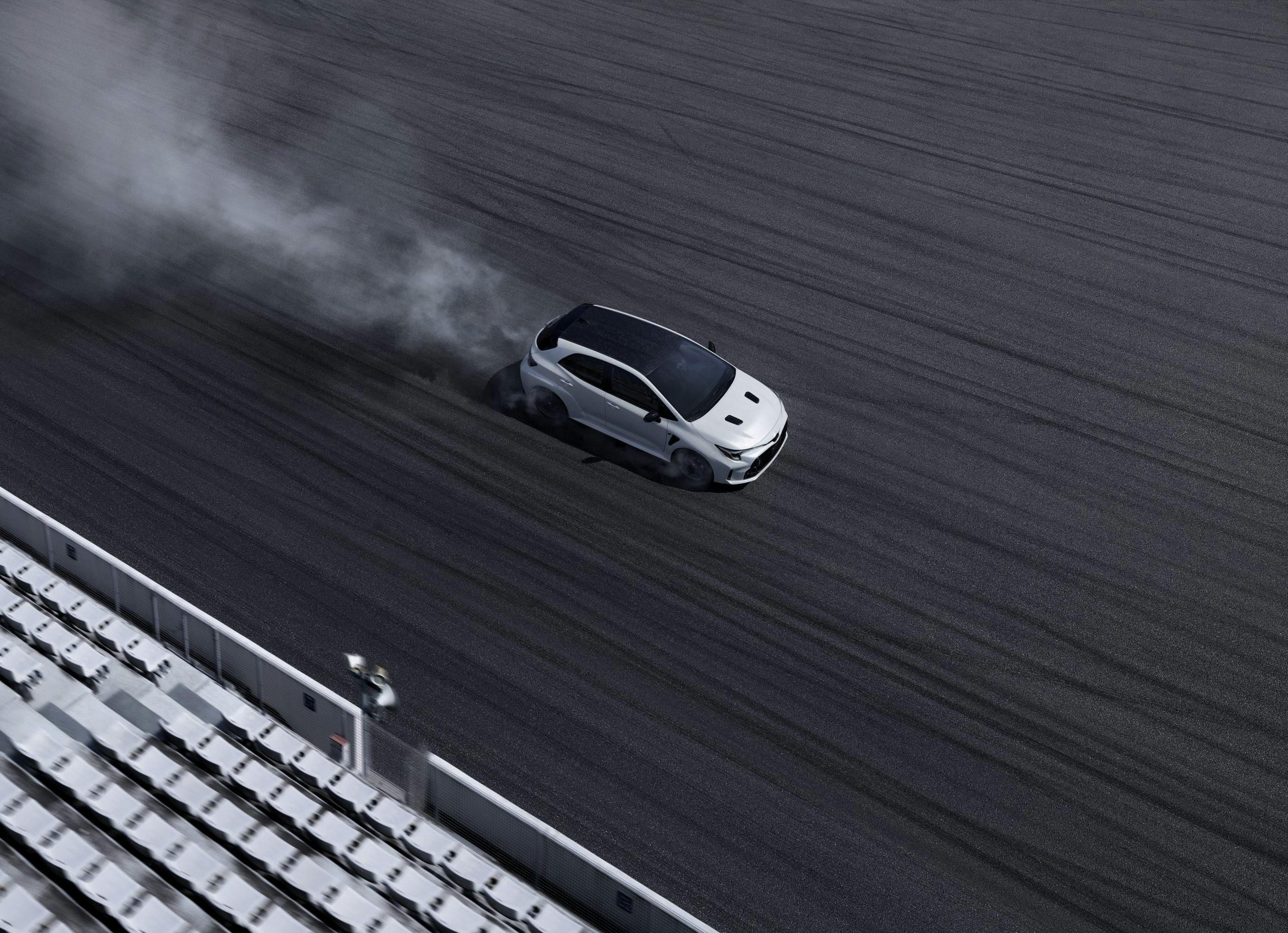
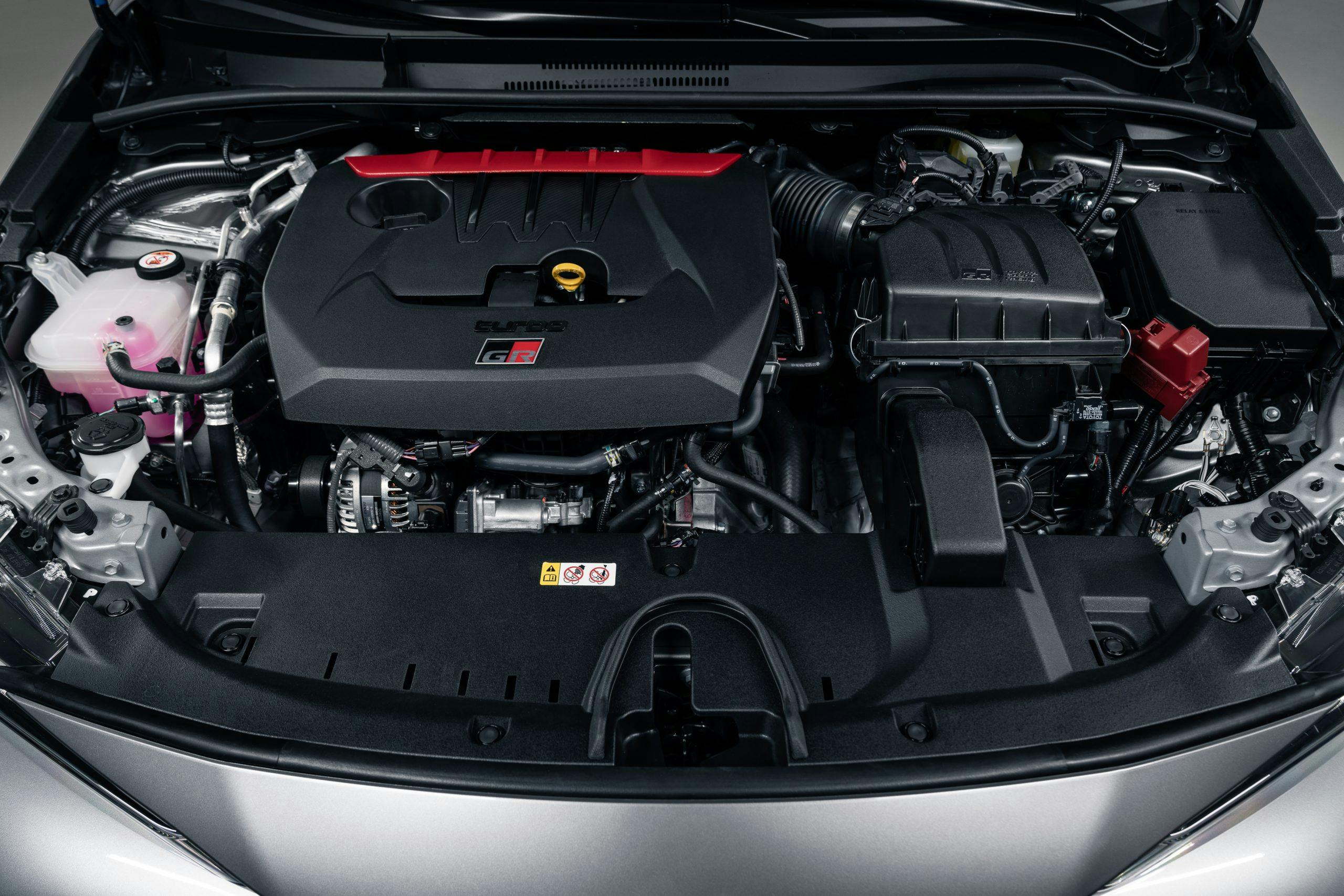
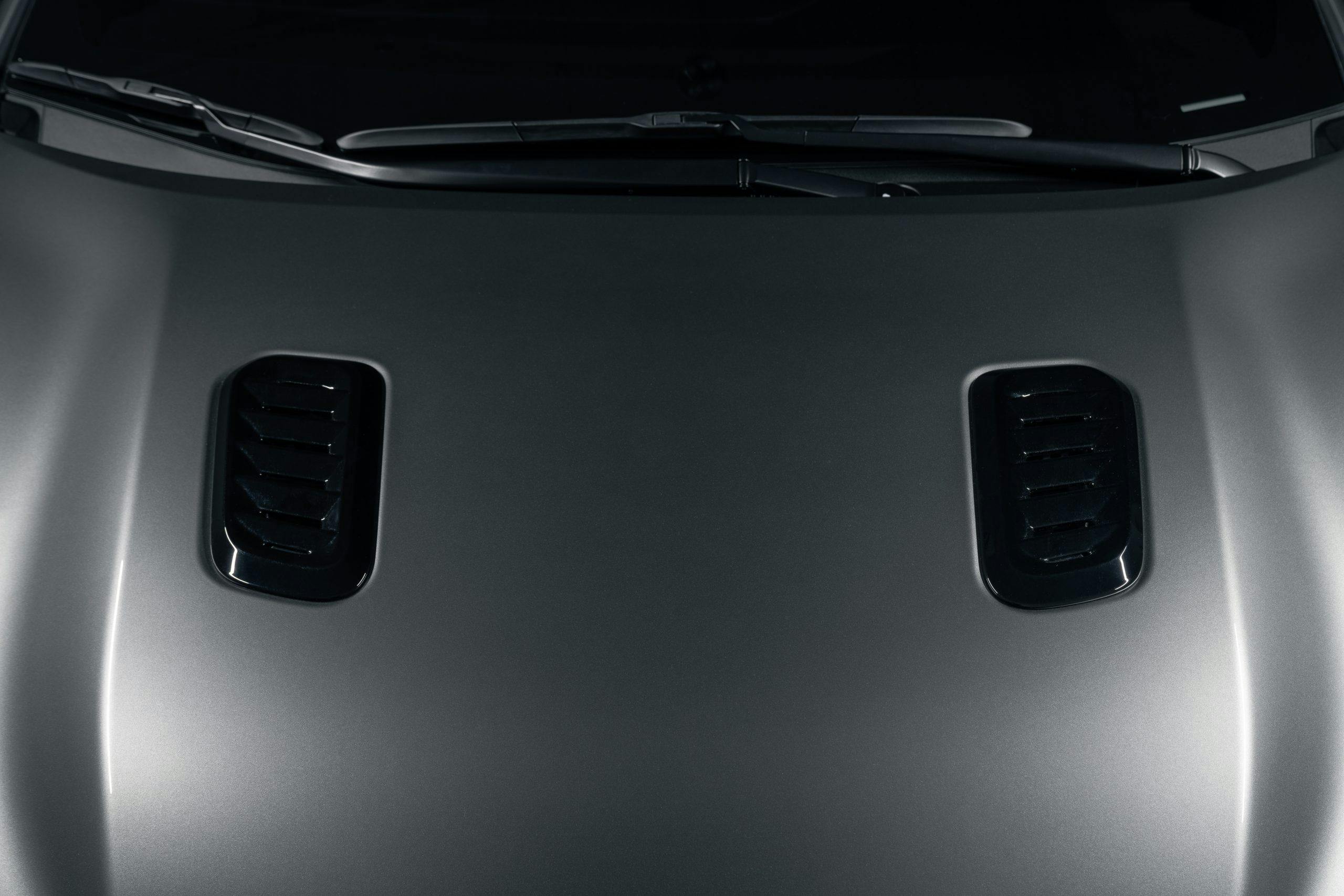
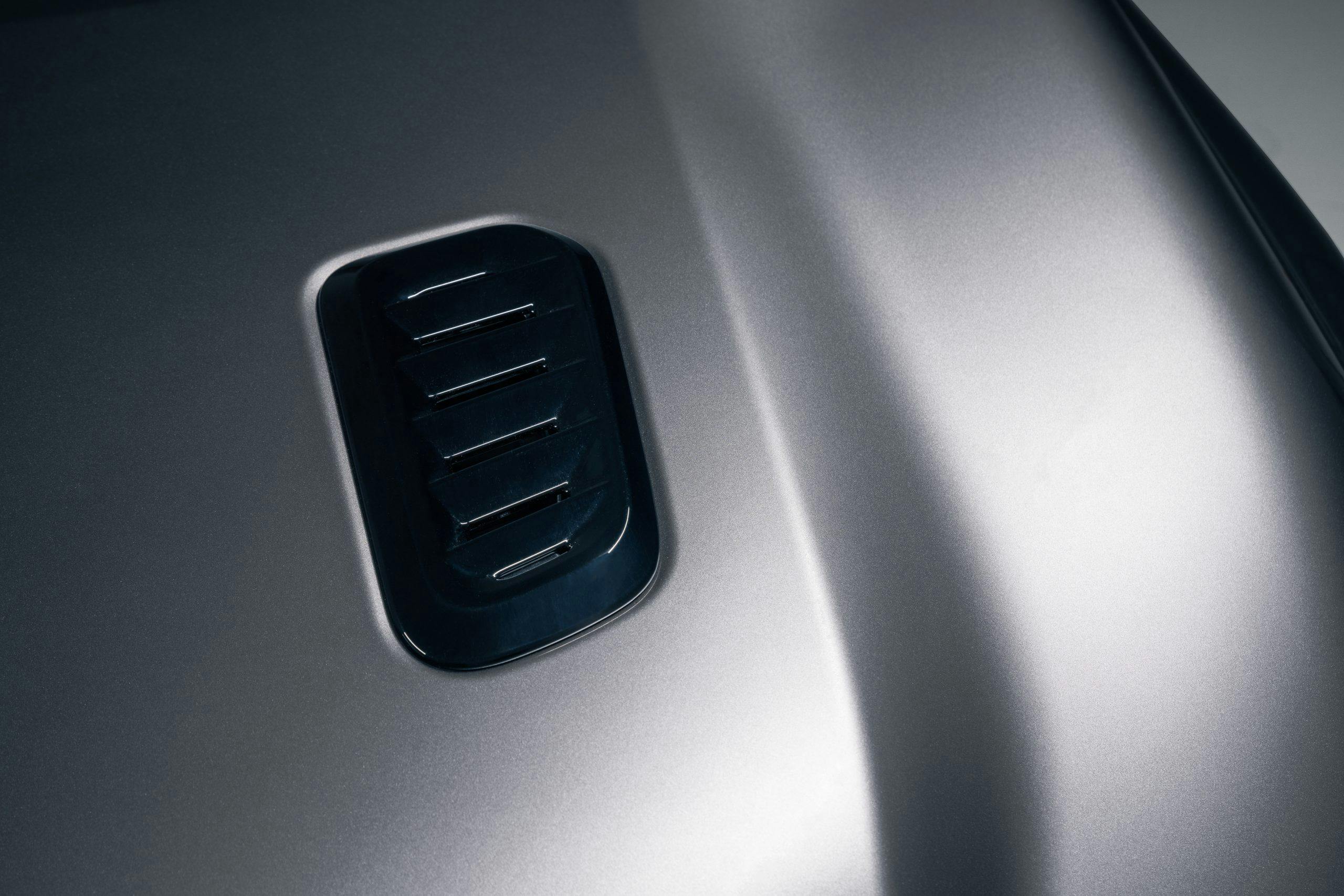

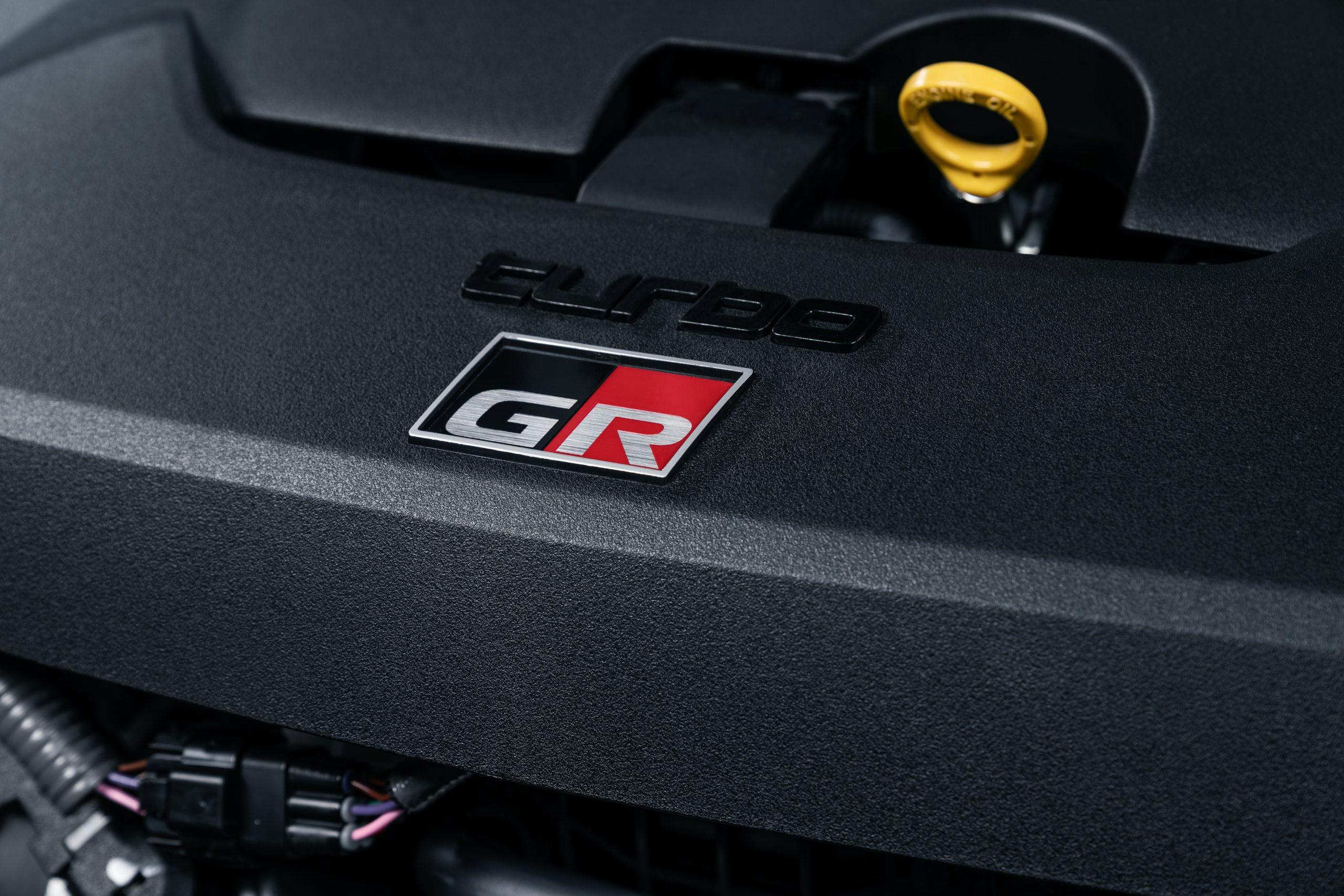
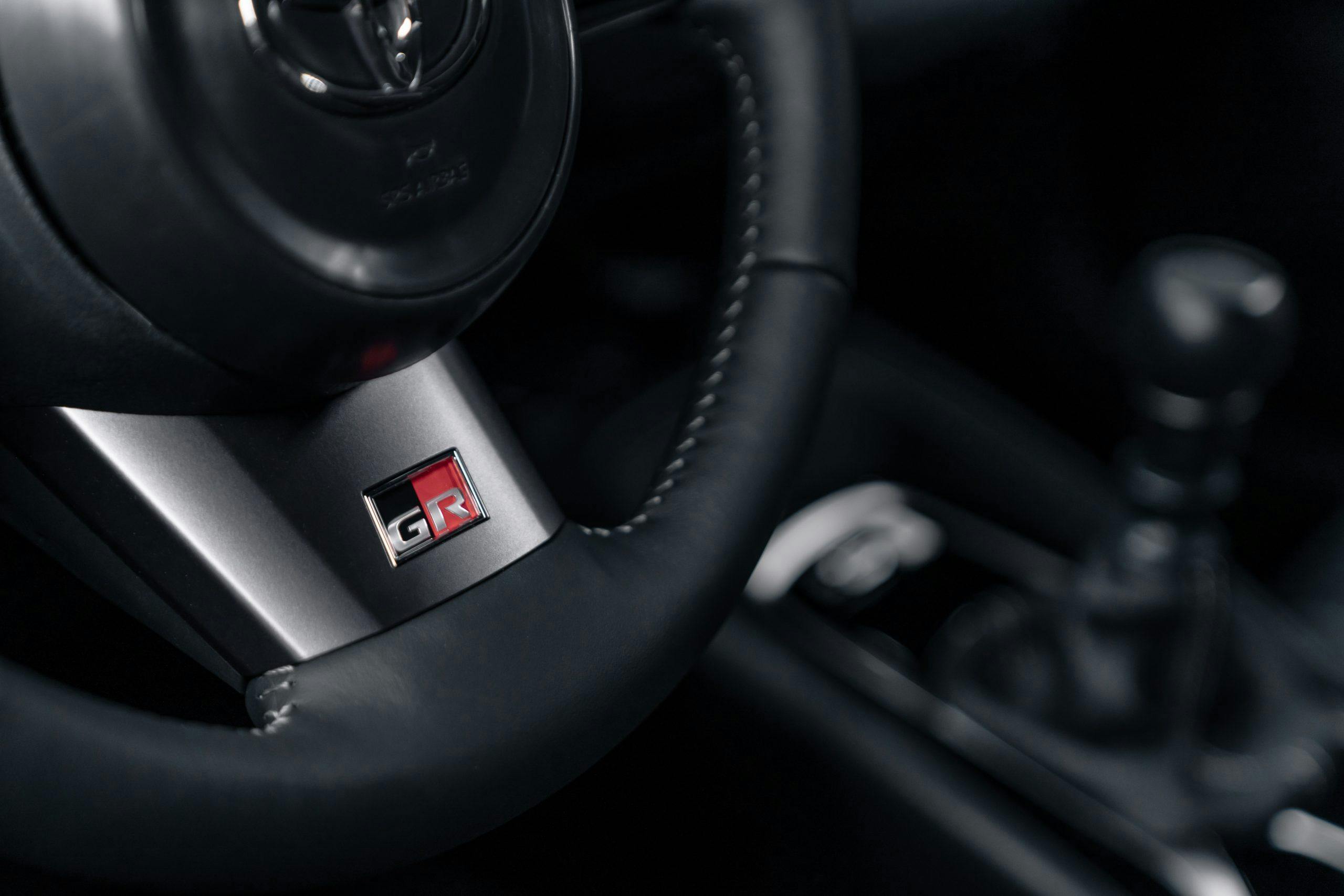
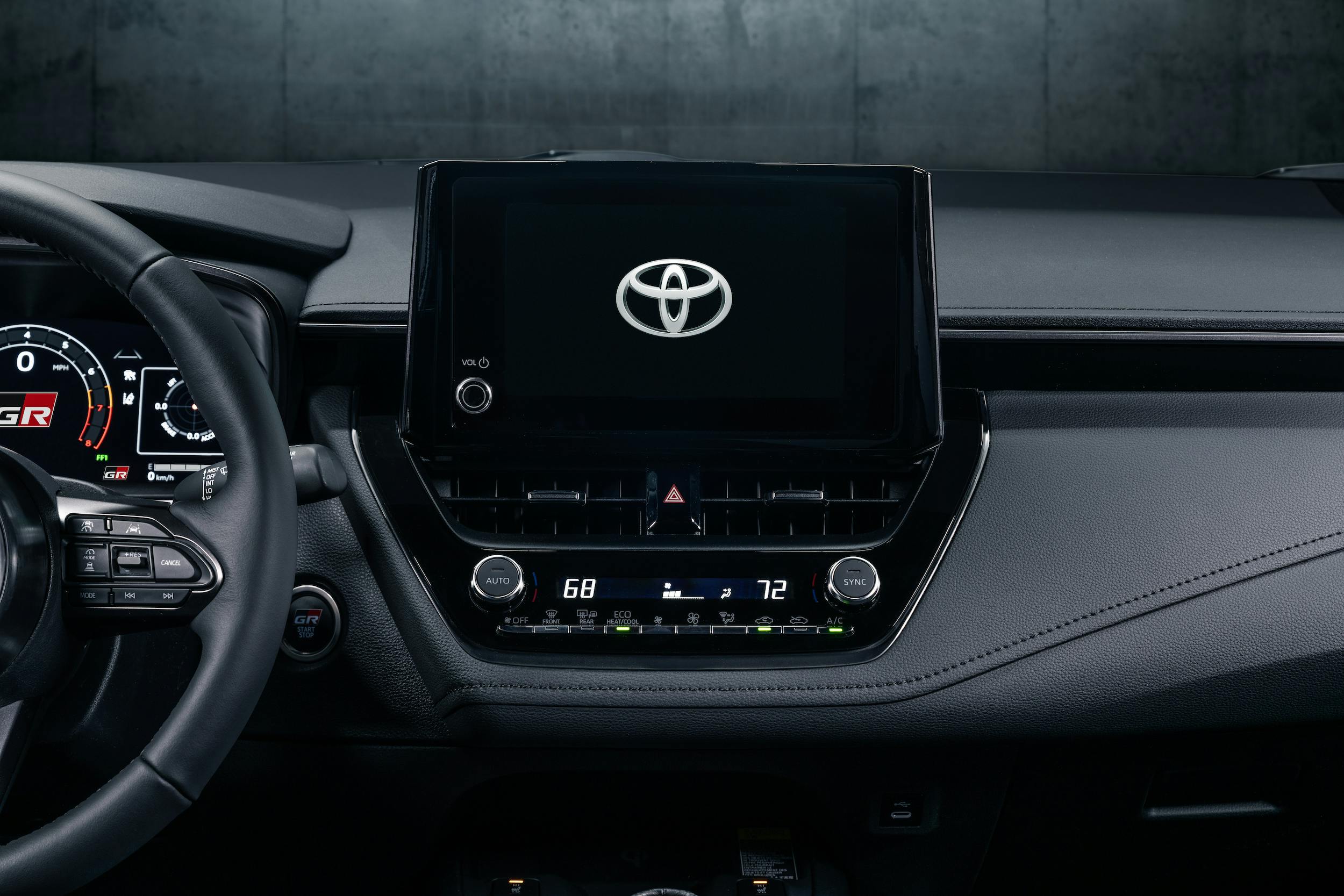
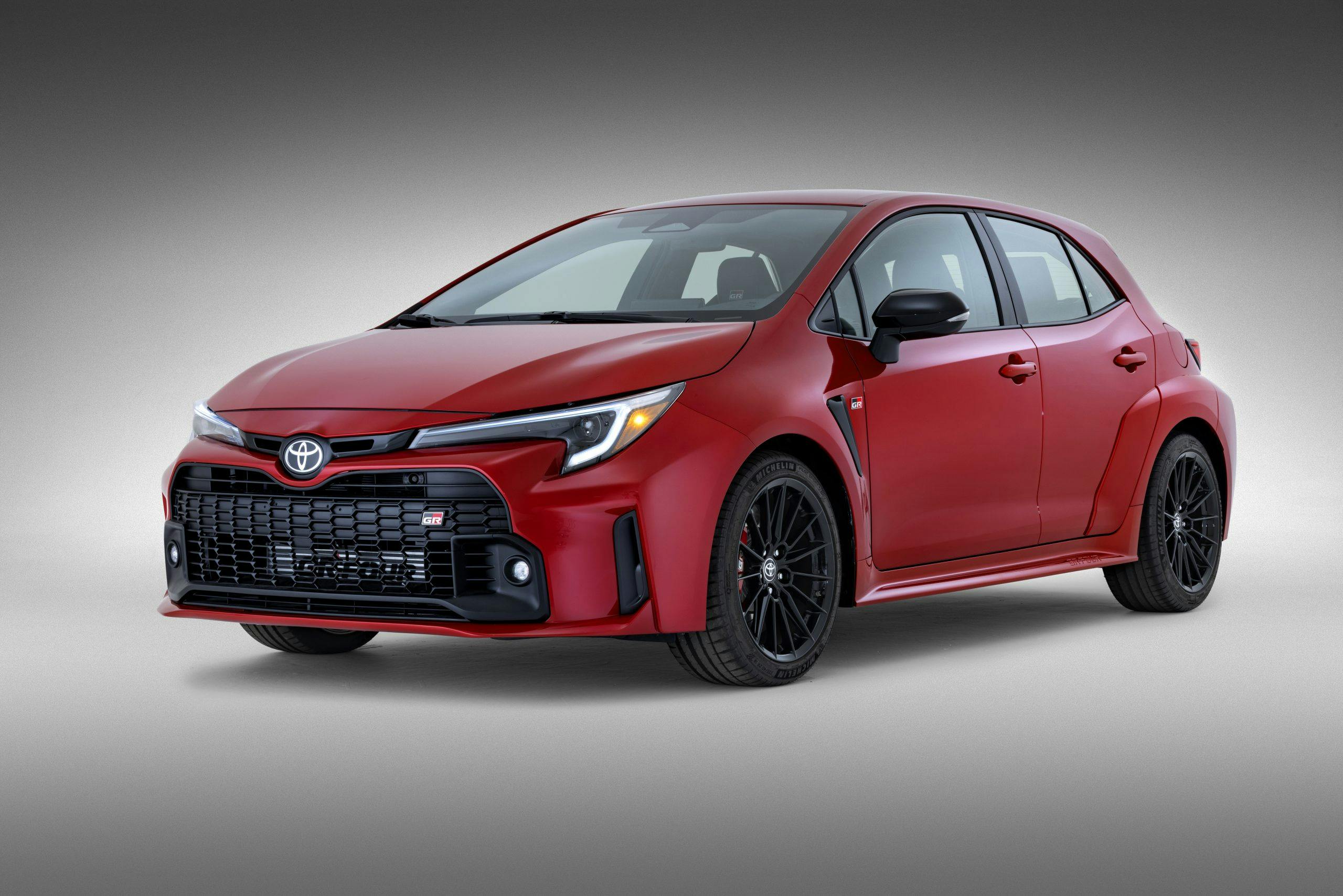
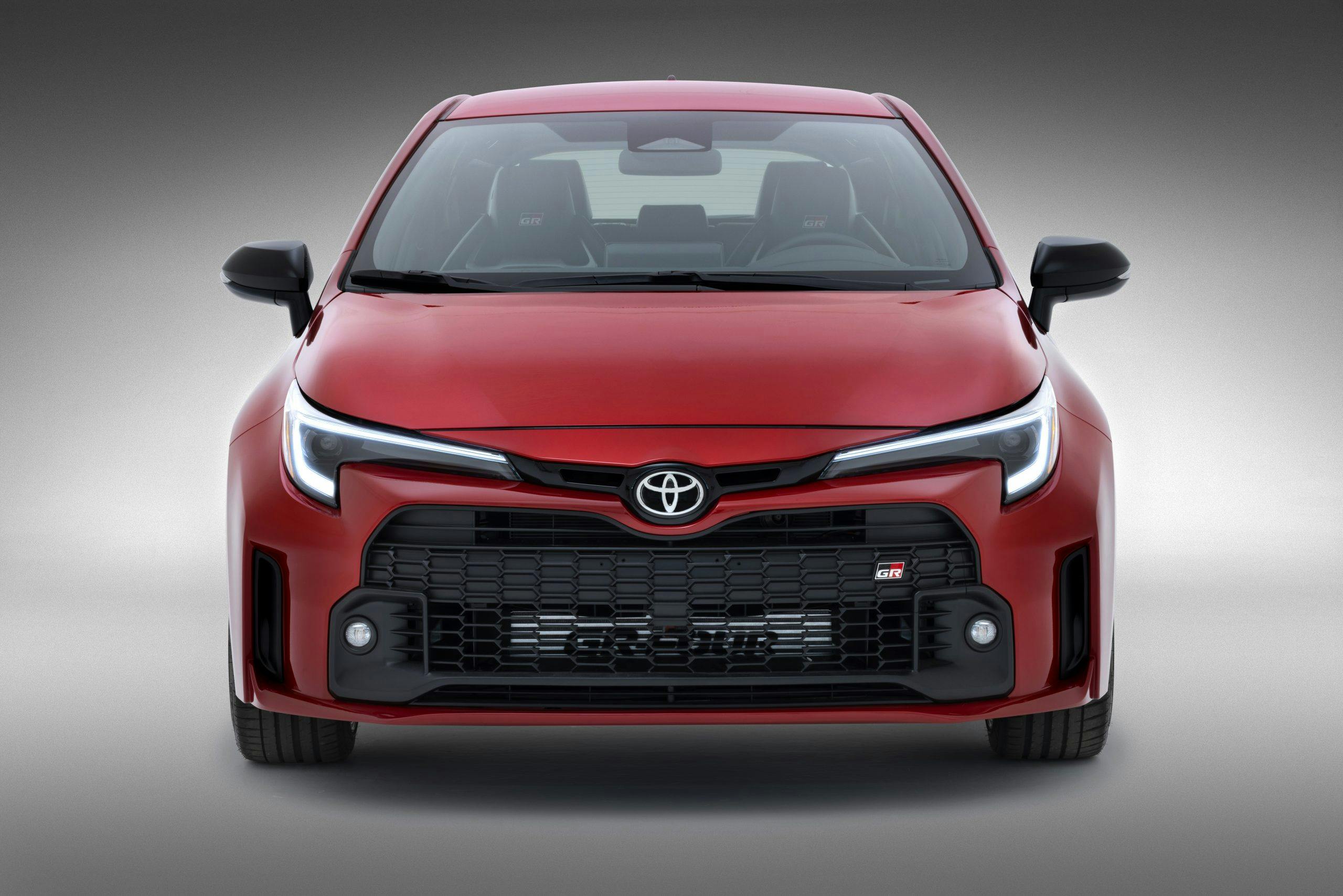

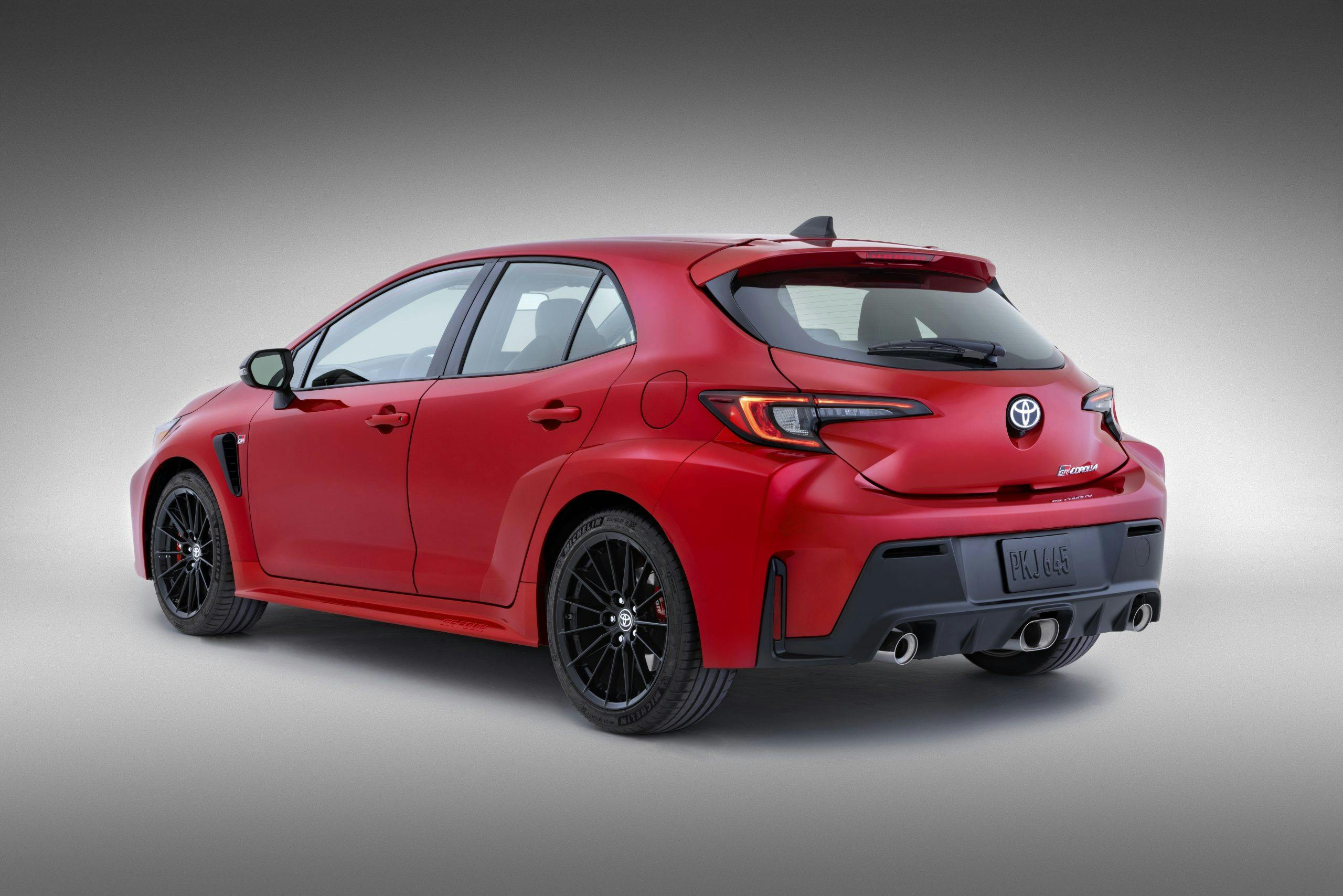
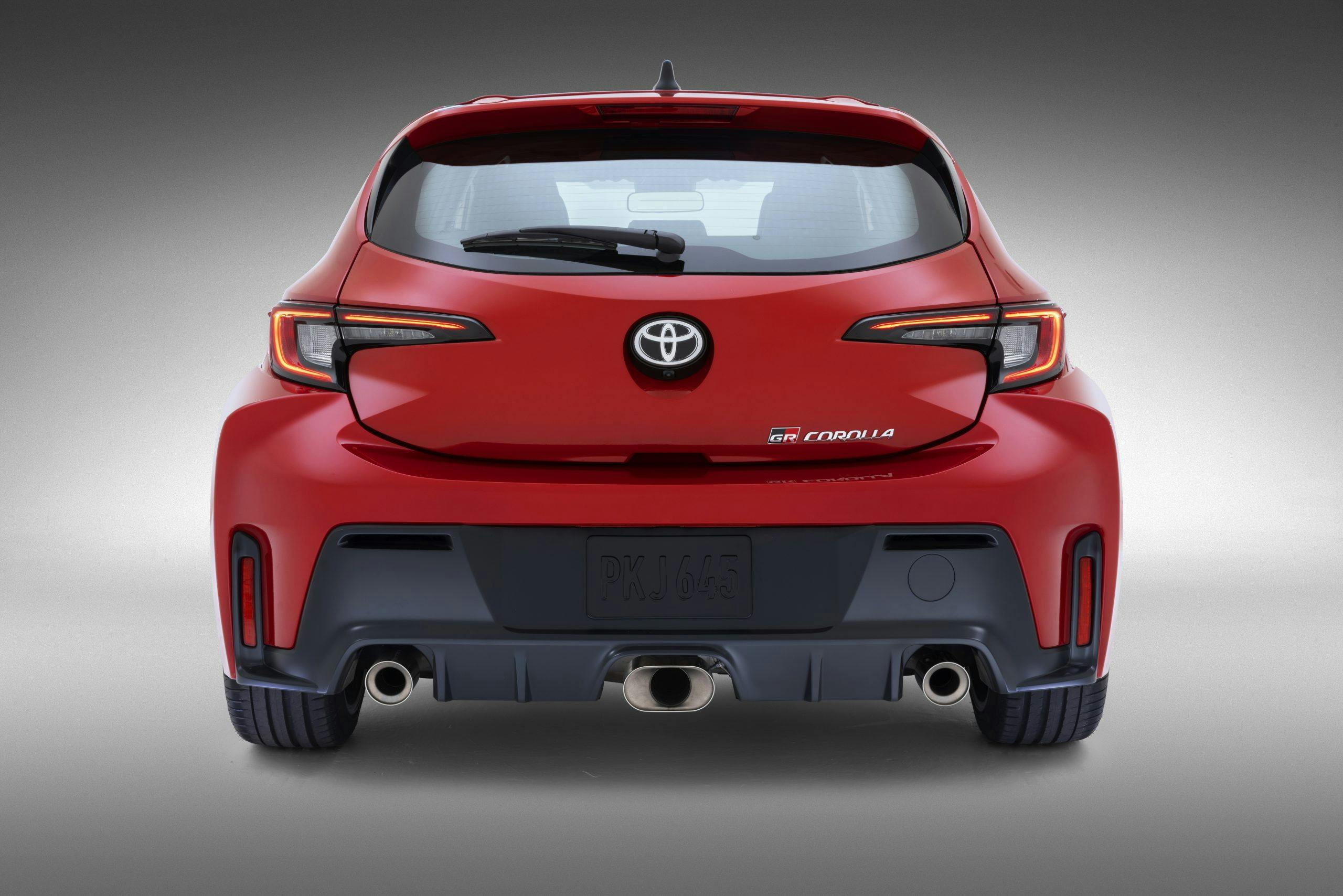
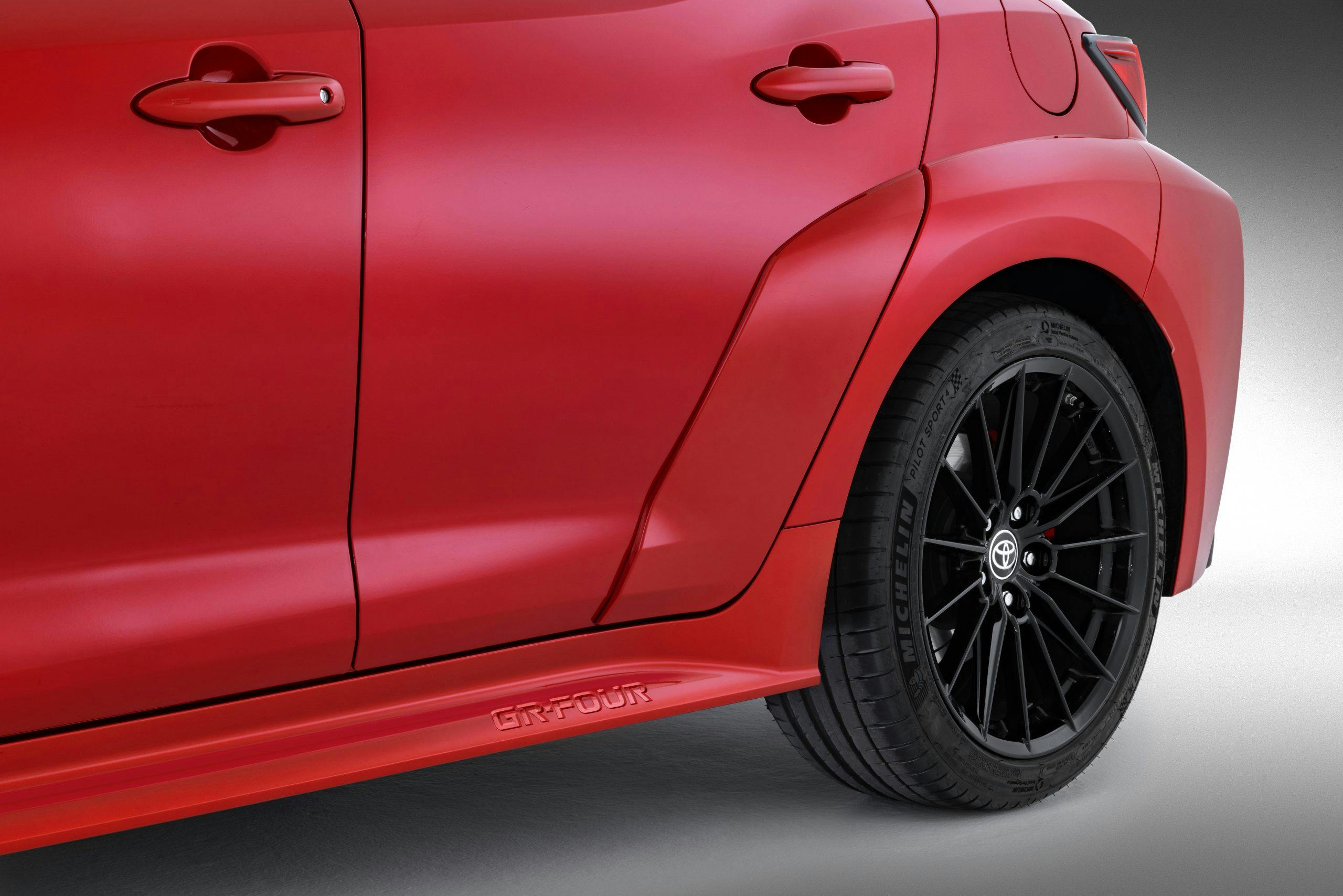
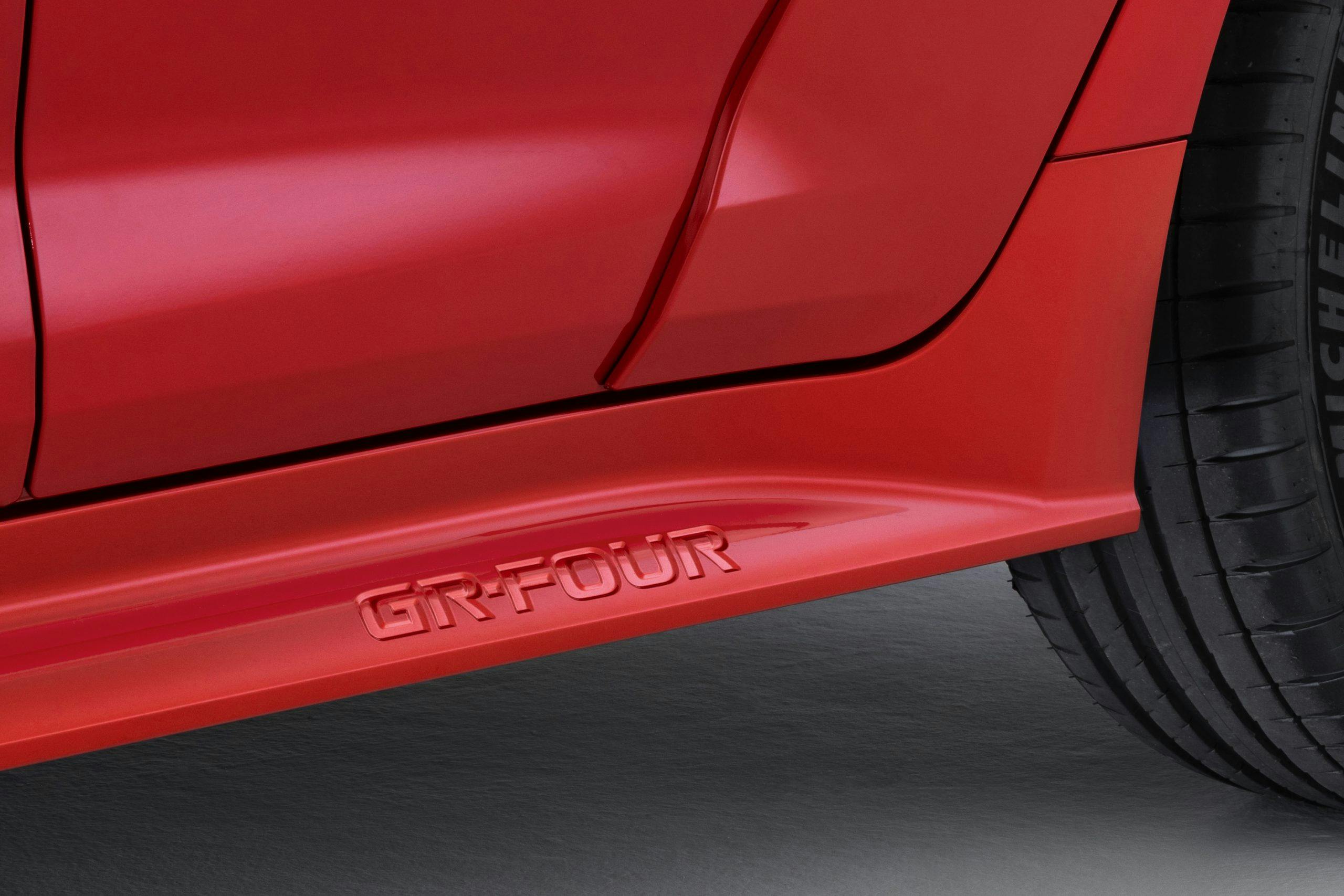





























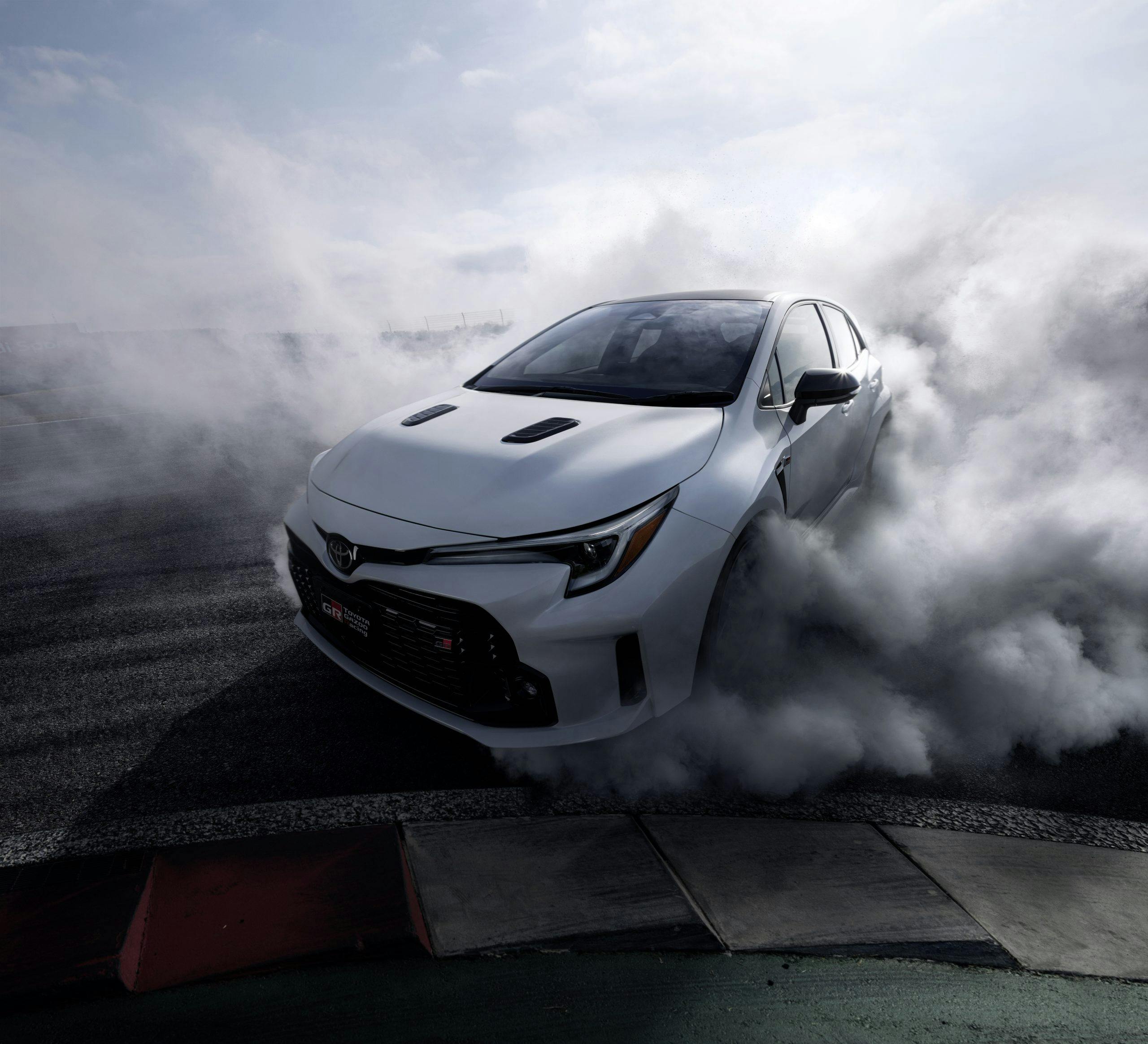
Toyoda stepped down on April 1st. His “vision” did not align with corporate.